First Lieutenant Robert Michael Follensbee
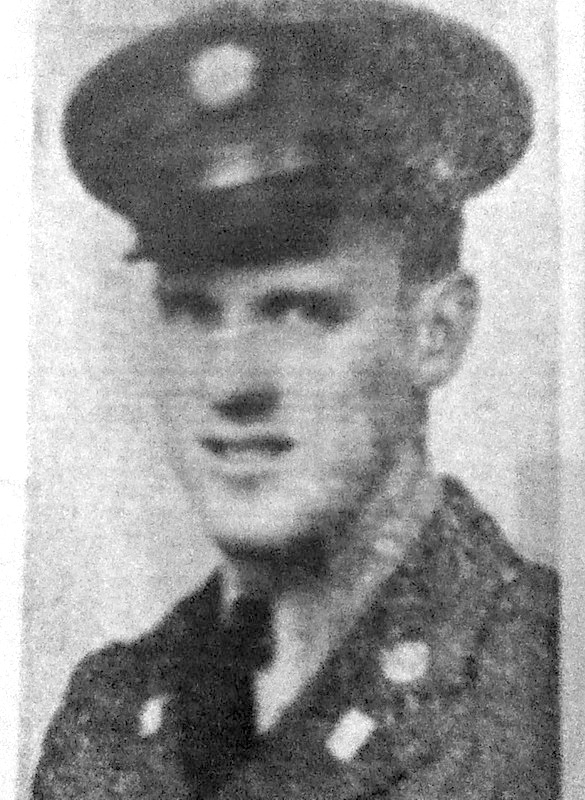
- Unit: 4th Infantry Division, 12th Infantry Regiment, 3rd Infantry Battalion, Company K
- Service Number: 20602000, O-1290580
- Date of Birth: March 10, 1921
- Entered the Military: March 19, 1941
- Date of Death: June 12, 1944
- Hometown: Waukegan, Illinois
- Place of Death: near Montebourg, France
- Award(s): Bronze Star, Purple Heart
- Cemetery: Plot F, Row 5, Grave 18. Normandy American Cemetery, Colleville-sur-Mer, France
Mentored by Mr. Josh Bill
Waukegan High School
2012–2013
Early Life
Robert (Bob) Michael Follensbee was born on March 10, 1921, in Rochester, Minnesota, to Oren Follensbee and Etta Follensbee. He was the youngest boy in a family with five children. His family moved to Waukegan, Illinois, when he was two years old. During Follensbee’s middle school years, he lived with his grandmother and uncle, Will Hennessy.
Active in School Activities
Follensbee came back to live with his family when he entered Waukegan High School. He participated in his Junior Reserve Officers’ Training Corps (JROTC) chapter. He also played sports, including basketball and baseball, and took part in the high school’s History Club.
Civilian Conservation Corps
After graduating in 1938, Follensbee joined the Civilian Conservation Corps (CCC), which was part of President Franklin D. Roosevelt’s New Deal. He did manual labor that contributed to developing and conserving natural resources. He worked about 40 miles from home, so he often visited his family.
After working with the CCC for eight months, he went to business college and graduated as an All-Around Honor Pupil. With few job prospects, he joined the National Guard on March 19, 1941.
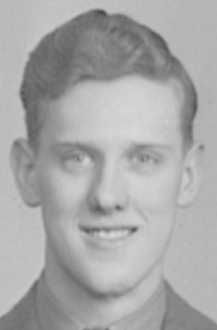
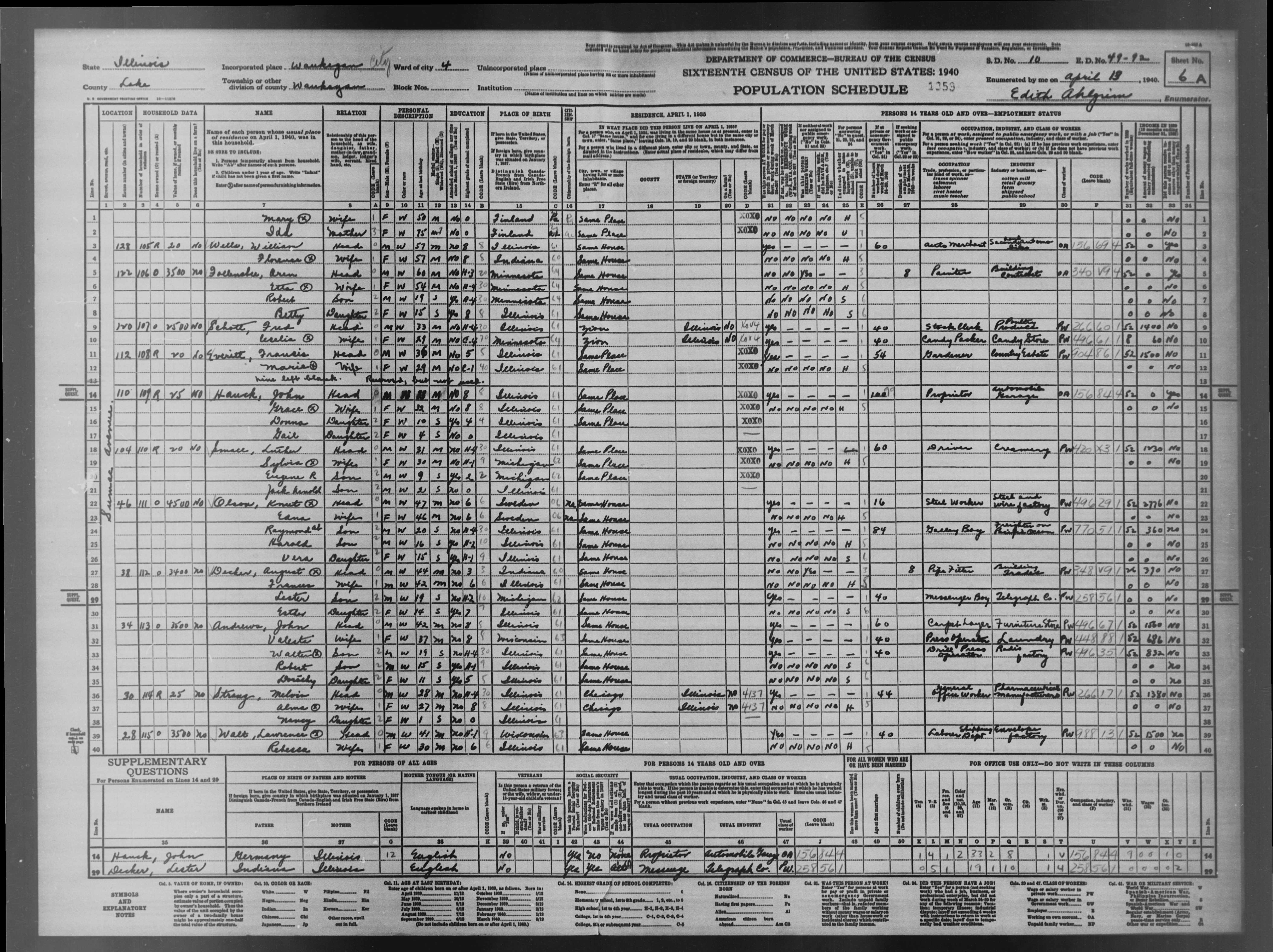
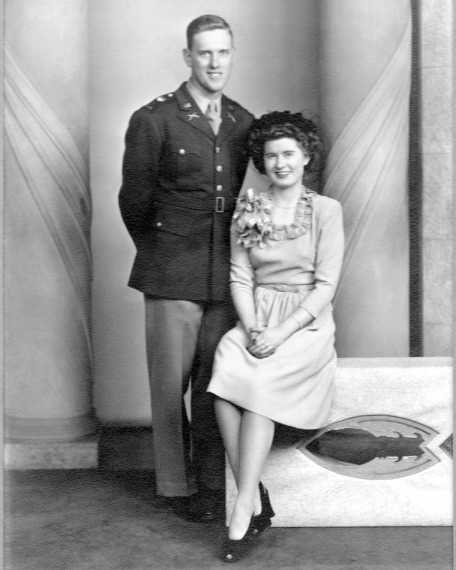
Homefront
Illinois Trains Men for War
Illinois had a strong agricultural base and provided food to the war effort. Also, Lake Michigan was the home of the Great Lakes Naval Training Center, a naval port that provided a safe large water source for training. Chicago boasted many training facilities that helped train troops, like Fort Sheridan and Camp Ellis.
Illinois Expands Manufacturing
Illinois gave much of its natural resources of coal, iron, and gas to the war effort. Many plants opened in the Chicago area and offered job opportunities to Illinoisans. The Douglas Aircraft Corporation, for example, built more than 5,000 C-54 “Skymaster” transport aircraft.
War in Waukegan
Oddly enough, the war brought many opportunities for the American people. Considering that they were slowly coming out of the Great Depression, people had more job opportunities available because of the demand for war supply. Steel companies like U.S. Steel & Wire helped create wire and wire products.
After his deployment, Follensbee’s hometown of Waukegan saw U.S. Steel’s expansion. They manufactured barbed wire, steel posts, netting, fencing, camouflage, tanks, jeeps, guns, shells, bullets, and bombs. During the war, U.S. Steel & Wire released magazines of the work they were doing and the soldiers that were off at seas that had once worked for them. They even kept track of what companies in certain cities made in hopes of making people work harder than ever.
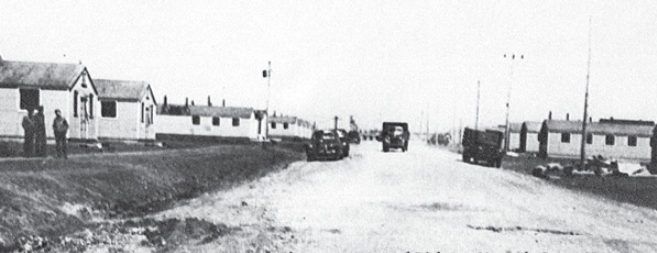
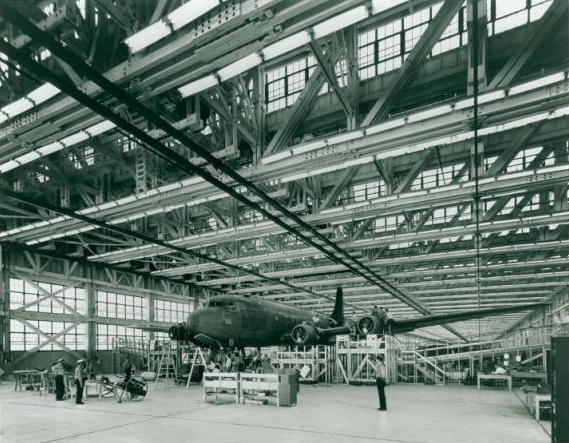
Military Experience
Officers Candidate School
By May 10, 1942, Follensbee declined a tour in the Pacific Theater to attend Officers Candidate School at Camp Gordon, Georgia. He graduated and was commissioned a second lieutenant on August 19, 1942.
During his training in Camp Gordon, Georgia, Robert wrote to his aunt, Mary:
Dear Aunt Mary-
Thanks many, many times for remembering me on my graduation and mission as an officer. I find my new work most interesting, it calls for a full day- we commence about 5 A.M and hit the hay about 11 P.M. Mother probably told you of my mix-up in orders- But I like this camp, still have high hopes of getting a leave, but can never tell. It certainly gives a fellow a feeling of getting ahead when he knows so many are behind him and interested in what he does
So, thanks again and I hope I can make this longer next time, but duty calls now.
Love from your nephew, Bob
Write if you get the chance.
Marrying and Shipping Out to England
In January 1944, he deployed southeast England to train for the invasion of Normandy. The 4th Infantry Division was assigned to enter through Utah Beach on D-Day. They trained for several months (something that Follenbee detested) to capture the Port of Cherbourg to bring in tanks and other heavy equipment. The invading army required resupply as quickly as possible, and capturing Cherbourg would cut off German power in northern France.
Landing on Utah Beach
On June 6, Follensbee entered Utah Beach on Normandy’s coast. Their first task was to capture Cherbourg, but this was not easy. After the landings, they received orders to reassemble themselves and proceed with their first mission.
Heavy Fighting for ‘Bloody Hill’
The 12th Infantry Regiment proceeded with little resistance until June 11, when they encountered heavy fighting around Montebourg, including heavy shelling and close-range fighting. Follensbee’s 3rd Infantry Battalion sought cover from the heavy fighting. Captain Lindner called to his men, “Charge men! Follow me!” Men fixed their bayonets and charged up the hill, shooting anyone who ran and engaging in close combat. Follensbee partook in the fight for what is known as “Bloody Hill.” The Road to Cherbourg recorded a note about his valor, “The attack had cost several fine officers, among them being Lt. Bethea, Lt. Ceskowski, L. Robert M. Follensbee of Waukegan, Ill.” He died on June 12, 1944, fighting for his country.
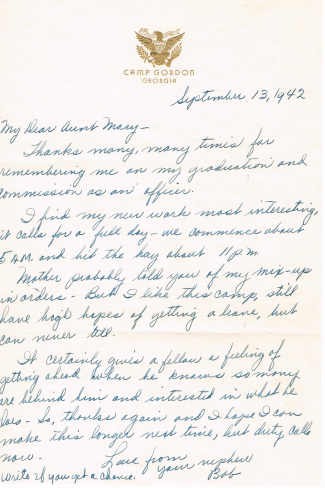
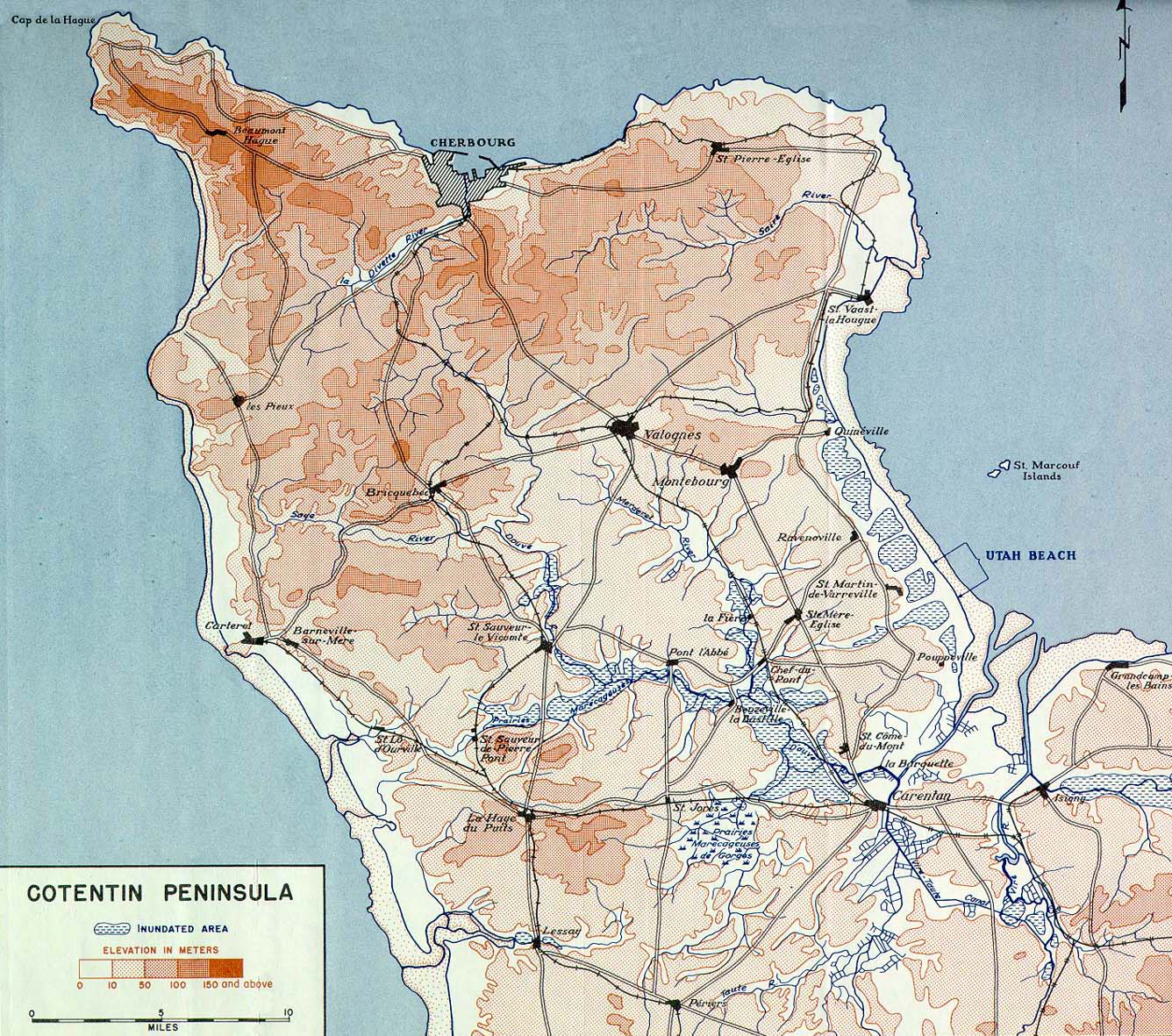
Eulogy
My favorite quote has to be from Dwight D. Eisenhower’s letter: “The hopes and prayers of liberty loving people everywhere march with you.” I never really understood that until I walked on Utah Beach. I imagined soldiers thinking of their families, hoping they would come back home to see their faces one more time. I also think of the word “liberty” and how men fought for freedom without ever thinking of themselves as heroes.
While we walked around the British Cemetery, I saw a grave that had “age 18” displayed. That is how old I will be by the end of this year, and I cannot imagine myself doing something that meant sacrificing my life, yet these men did. When I think of all the men who gave their lives in this war, I also think of their parents and how they must have felt. It has been said that “In peace, sons bury their fathers. In war, fathers bury their sons.” It makes you think of the sacrifice of the soldier and their families. I think it is an overall community affected by war, and it should be recognized.
Waukegan isn’t a big city; it’s north of Chicago and nearby Lake Michigan. That is where my soldier came from my hometown. Robert M. Follensbee was born in Minnesota in 1921. He later moved to Waukegan in a lovely white house on Sumac Avenue, which I can see perfectly from my history classroom. When I see the house, I picture him playing basketball and baseball for the high school teams. I also imagine his dad, Oren Follensbee, asking him if he could give him a hand with the painting at his job or his mom, Etta Follensbee, telling him that dinner was ready. As I flip through the yearbook of his high school days, I notice he was in ROTC for all four years. Then I start thinking of his sister, Betty, running to hug him as he walked through that door in his uniform. From the yearbook, I also see that he was in history club, which made me feel a little warm inside, knowing that we share the same interests.
He graduated from high school in 1938 and joined the National Guard in 1940. JROTC likely gave him the advantage of knowing what the military was all about. He was inducted into the Army on March 5, 1941. He was a first lieutenant in the 4th Infantry Division, 12th Infantry Regiment, 3rd Infantry Battalion, Company K. He was in charge of about 30 people. All the training in the world could not have prepared him for what was to come. The 4th Infantry Division saw its first action in France at Utah Beach and had plans to capture Cherbourg.
About 197 people died on Utah Beach on June 6, 1944. My soldier was not one of them. It doesn’t fit through my head that someone can run up those beaches with so much on their backs while trying to dodge artillery- I couldn’t even run, and I had nothing but my sweater and bag!
I picture you hiding in the hedgerows while keeping an eye on the Germans around the Montebourg area. Then suddenly, you were asked to hold high ground at Montebourg at all costs. And on June 12, as the fighting was continuously heavy, you laid in a bomb crater for protection. You fixed your bayonet and prepared to attack on orders. When Captain Lindner shouted, “Charge! Follow me!” you ran across open ground toward the enemy line. You weren’t surviving this time.
Now I remember your house again, as your sister checked for mail and got a letter that looked quite odd. I imagine your mother dropping the stirring spoon she had in her hands and falling to the ground as your dad ran from the garage to see what had happened. I saw this quote that reminded me of you and your family, “We pictured your return, the clasp of your hand. God said we’d meet in a better land.”
As I walked down the graves, I couldn’t help but think about all the sacrifices the soldiers put forth. I don’t think you ever saw yourself as a hero, or as anything important for that matter. It seems that you were only just a number to the world, and that’s not right. It’s sad to put everything in numbers because that’s not what this is all about. It is much more than that. It is much more than anyone can explain. You gave your life for your country. I want you to know that I will never forget you and the way you made me feel, just by writing this.
I feel like I have this special duty to tell everyone about you. In a way, I feel connected to you, not only because your name closely resembles that of my father and brother, but because we come from the same place. We walked down the same streets, cheered on the same team, and visited the same beautiful lake. We reminded ourselves that there was always something bigger than us while gazing upon it; perhaps that’s what allowed you to make the sacrifice you did, to put it all on the line for freedom because it was bigger than yourself. Although you might not have gotten to all the things you wanted to do, I want you to know that I will live for you and will always remember you.
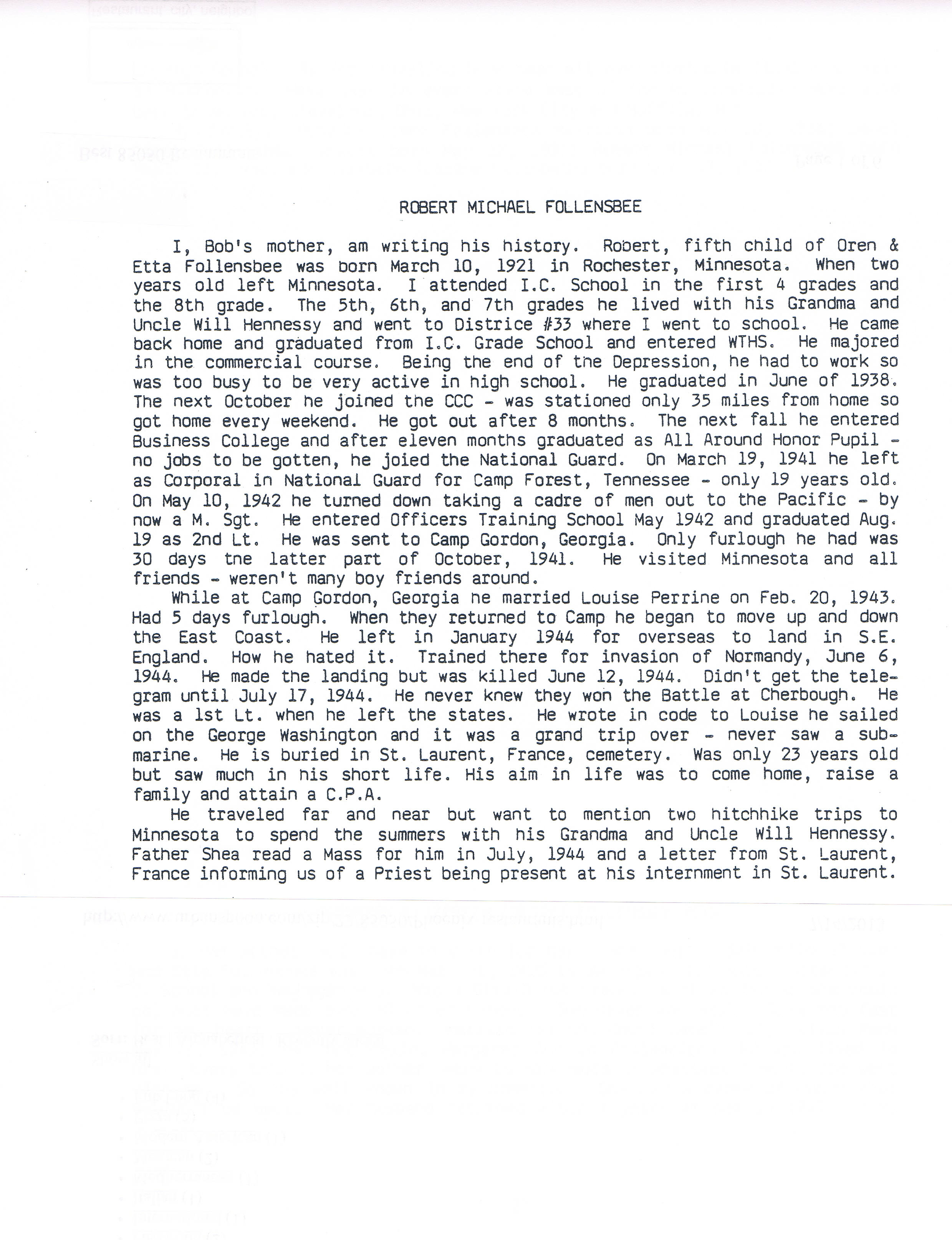
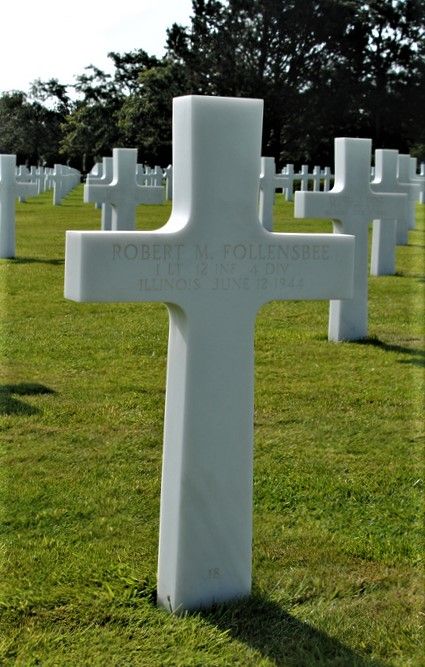
Bibliography
Primary Sources
Follensbee Family Documents. 1941-1950. Courtesy of the Follensbee Family.
Illinois. Lake County. 1930 U.S. Federal Census. ancestry.com.
Illinois. Lake County. 1940 U.S. Federal Census. ancestry.com.
“Lt. Robert M. Follensbee Killed in Action in France.” Chicago Daily Tribune. July 18, 1944: 9.
The Road to Cherbourg. National Archives and Records Administration.
Robert Follesnsbee and Helen Louise Perrine. Photograph. 1943. ancestry.com.
Robert M. Follesnsbee. Headstone and Interment Records for U.S. Military Cemeteries on Foreign Soil, 1942-1949. ancestry.com.
Robert M. Follesnsbee. World War II Army Enlistment Records, 1938-1946. ancestry.com.
Robert Michael Follesnsbee. Birth Certificate Index, Minnesota Historical Society. Accessed January 9, 2021. www.mnhs.org/people/birthrecords/1921-23491.
Waukegan High School Yearbook. 1938.
Secondary Sources
“1Lt Robert M Follensbee.” Find a Grave. Updated August 8, 2021. Accessed January 9, 2021. www.findagrave.com/memorial/56644563/robert-m-follensbee/.
Cotentin Peninsula. Map. 1947. U.S. Army Center of Military History. history.army.mil/books/wwii/utah/maps/Map40.jpg.
Launius, Roger D. “Illinois in World War II.” Illinois History: A Magazine for Young People. April 1995.
“Robert M. Follensbee.” American Battle Monuments Commission. Accessed January 9, 2021. www.abmc.gov/decedent-search/follensbee%3Drobert.
Utah Beach to Cherbourg. Washington, D.C.: Center for Military History, 1948. history.army.mil/BOOKS/WWII/utah/utah.htm.

